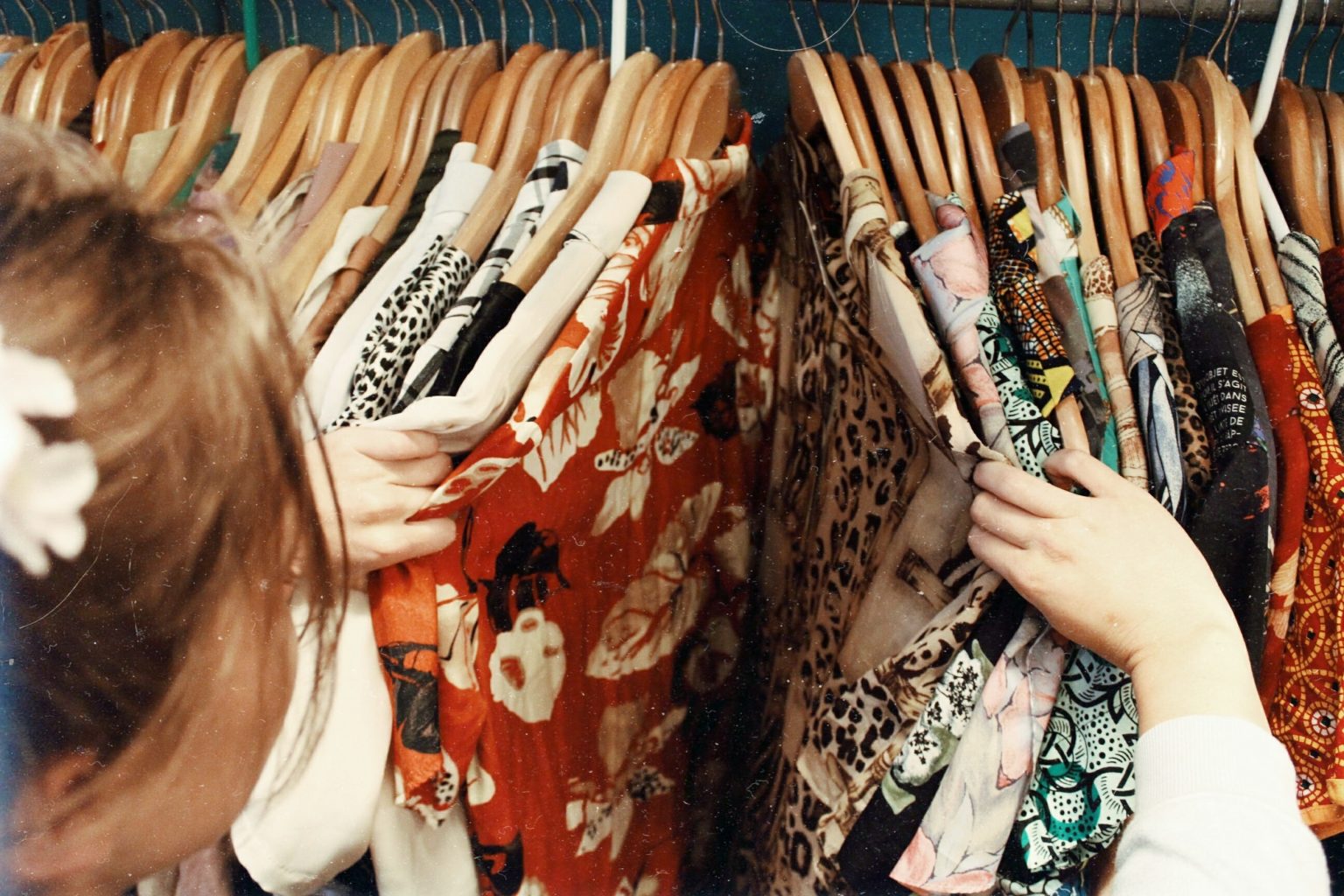Fast fashion has long been a growing environmental and economic concern within the fashion industry. With well-known fast fashion brands becoming increasingly popular, Label volunteer, Jennie Baxendale, explores the alternative of slow fashion, and how consumers might alter their buying habits with the environment in mind.
‘The first step to slow fashion is asking why before you buy’
Do you really need something new? Or are we just being lured into this consumerist lifestyle which, amplified by social media, influences our desires to ‘keep up’ with the latest trends? Author and activist Kate Fletcher who coined the term ‘slow fashion’ in 2007, acknowledges the fact that ‘fast fashion isn’t really about speed, but greed: selling more, making more money’. We are merely fuelling an industry rich in waste and cheap in its consideration for the people and the planet. Slow fashion encourages a consciousness for the workers, manufacturing practices and ultimately for the extent of our buying habits impacting the environment.
Slow fashion is a mindset. So how do we achieve this? Here are some ways you can make fashion/buying clothes more sustainable:
- Get Creative. Experiment with clothing items you already own and try re-styling them. There are so many tutorials online to help develop this skill and setting aside some creative time, whilst acting more sustainable, can end up becoming a satisfying project. If creating a clothing item is a little ambitious first time, then you could even just reuse the fabrics from old clothes for alternative uses or crafts.
- Buy Less. Pretty self-explanatory, yet this simple, sustainable approach is the most obvious. If you feel you’re spending too much monthly or even weekly on clothing hauls then try and minimise this habit. Swapping and sharing clothing with friends can be a great way to limit buying more (especially great for nights out) by encouraging less last-minute buying from fast fashion brands. Which leads onto the next point…
- Shop Quality. Rather than purchasing cheaply and often from brands which, let’s face it, are significantly compromising on quality, try and consciously seek out higher quality pieces. Buy less and pay more, and you may even find items which others don’t have. ‘When we’re none the wiser, we happily pay pennies for ‘bargains’ – and unwittingly let the costs to nature, people and the planet mount to breaking point.’ – Greenpeace
- Minimalism. Cut back on buying randomly and think more deeply into curating a wardrobe which can be interchangeable. Before you buy, think about what you own already and if you can contribute to existing pieces to create new outfits. Minimalism also encourages a greater value over your possessions and a disregard for the pressures of consumer culture.
- Research Brands. Before you purchase from a certain brand, take a look at their sustainability promises and what production methods are in place. Ensure they align with your values so you can feel content with the knowledge that they too, are eco-conscious.
- Recyclable Textiles. Clothing products which are made from biodegradable materials can aim to limit raw material exploitation and greatly reduce wastage. Recyclable textiles could also reshape the fashion industry into a circular economy. It’s alarming that the fashion industry uses an estimated 98 million tonnes of raw materials every year and by 2050 is predicted to reach 300 million tonnes…. And so to some more disconcerting statistics…
‘Clothing production produces more emissions than international plane travel and shipping combined.’ (House of Commons Environmental Audit)
‘The industry is responsible for up to 10 per cent of greenhouse gas emissions globally.’
‘Each year, the fast fashion industry produces 92 million tonnes of waste.’
When looking at some of the top fast fashion brands, on average, 80% of clothing products use new plastics, including big names such as PLT, Misguided and Boohoo.
Lboro Vintage, regularly popping up on campus, is a great place to look for some cool sustainably sourced pieces. (https://lborovintage.com). Vintage shopping in general is a fun way to re-buy pre-worn clothes and seek out some vintage gems from established, trendy brands and you’ll never be short of quarter-zip choices! Depop is a ‘go to’ place to find particular items you may have in mind and is a great platform for selling clothes and accessories and for reusing clothes which would otherwise contribute to the issue of clothing waste. Similarly, Etsy is perfect for searching up specific items you may have in mind and sourcing small independent businesses that offer artisan products made from top quality materials. Browsing on Etsy you will find some handmade, authentic and original pieces. It’s also ideal for finding second hand high-end brands, if you’re looking for something more luxurious.
Even on mainstream online sites like NA-KD, you can find a pre-loved section where you can purchase recycled products.
So, if you feel your spending habits and reliance on fast fashion is an all too real and regular occurrence, then just take a moment to consider – What steps could you take to help protect the planet and shop more sustainably?
‘Buy less. Choose well. Make it last.’ Vivienne Westwood



